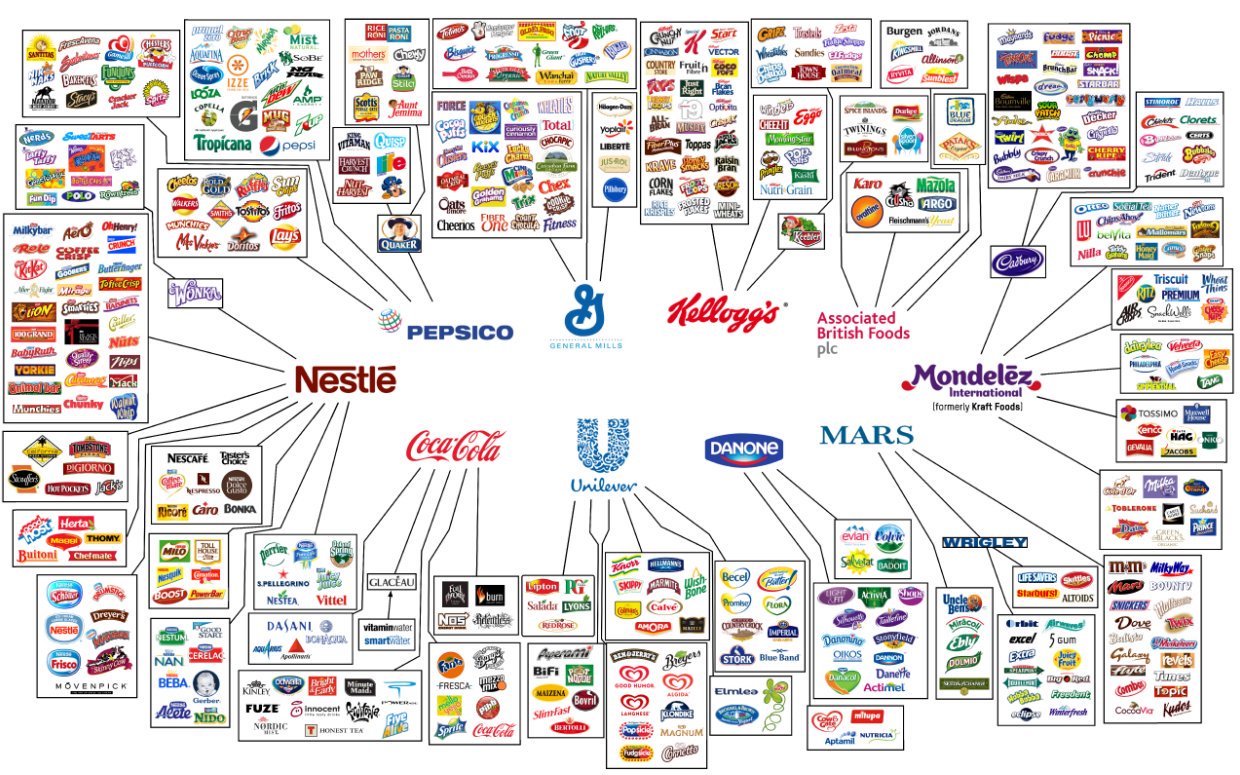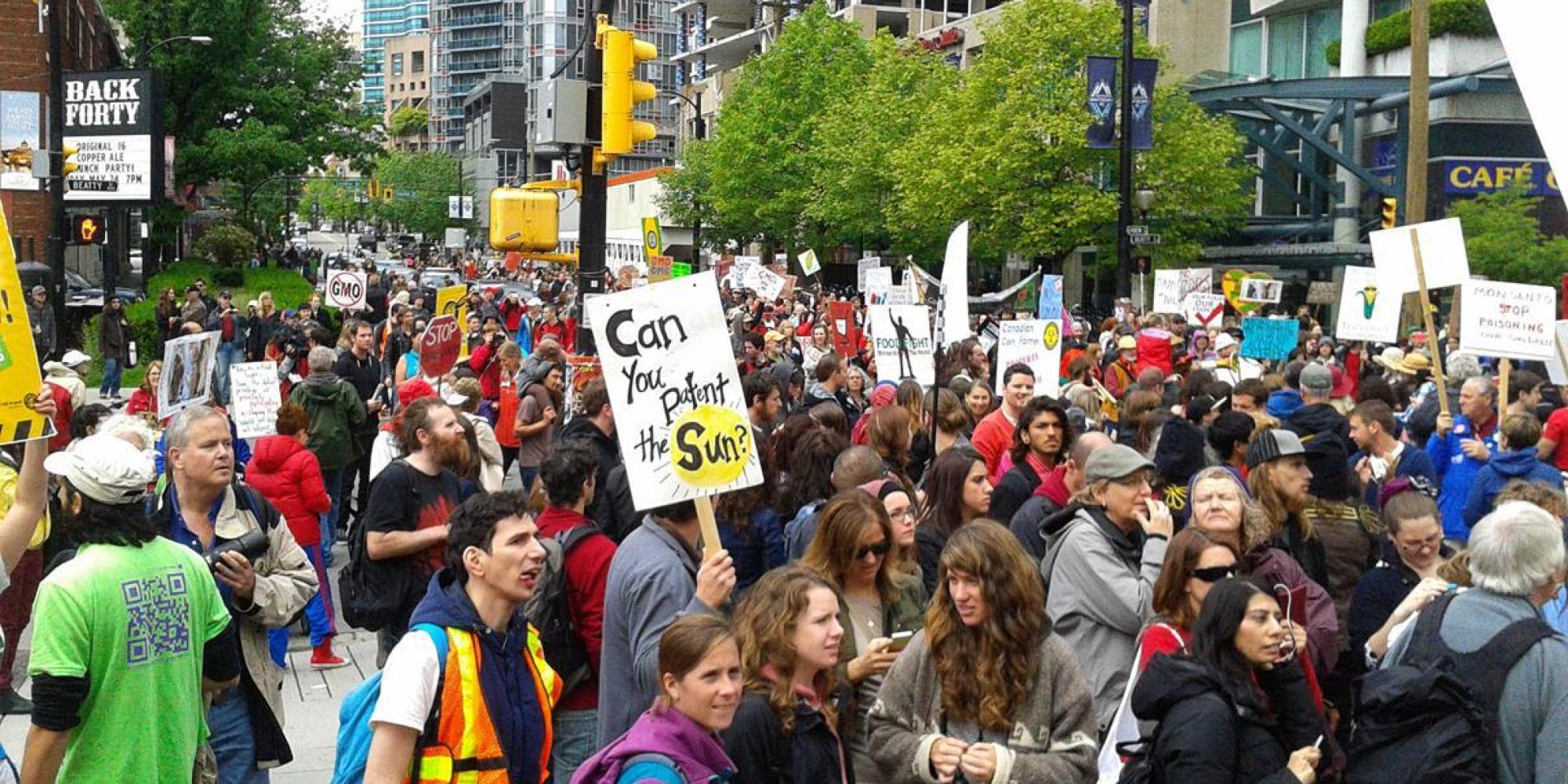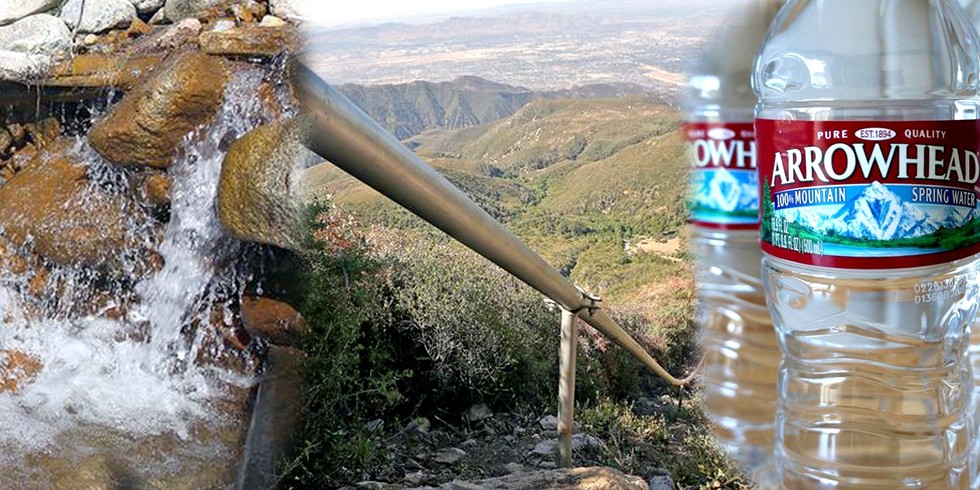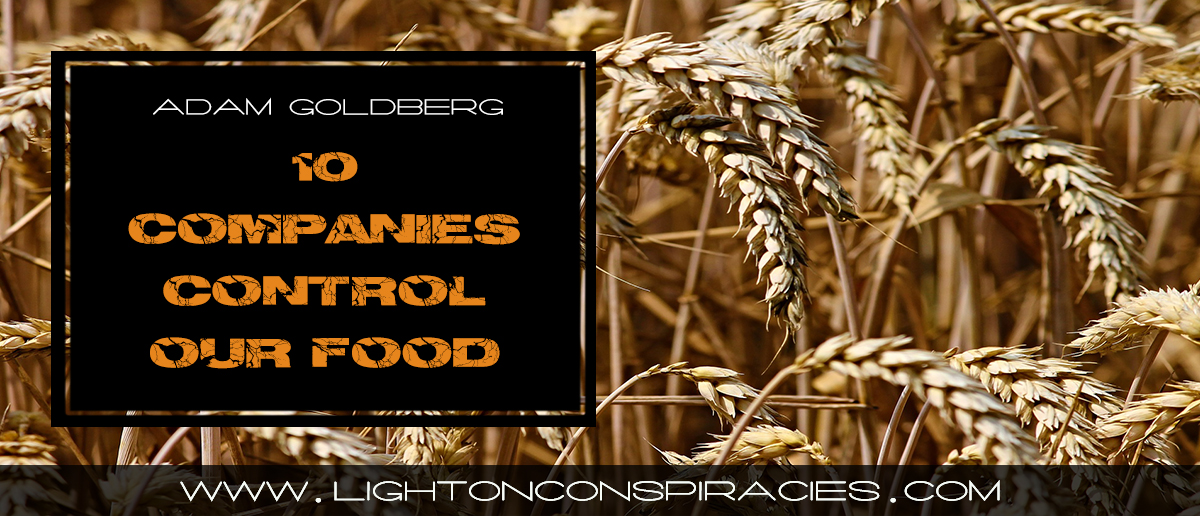Have you ever seen those dense info-graphics, the ones with names of different corporations, charities or NGO’s, and wealthy individuals that seem to link power together, perhaps the one that is centered around the Bilderberg Group?
Well if you thought that one was just made by conspiracy theorists or something like that, the reputable organization Oxfam International created this infographic, to illustrate how a lot of the world’s food supplies are controlled by ten corporations, really processed food you’ll find on the shelves of feeding troughs, I mean grocery stores, throughout the West.
Just go to your local grocery store, walk through the aisles of various breakfast cereals, chips, candy bars, whatever you can think of, and pick up every product you can find. Identify the brands, and then compare the brand of every item you pick up at the store to this map.

However the bad press reaching Bayer/Monsanto, especially with the lawsuit involving the man who was declared to have gotten cancer from Monsanto’s glyphosate weed killer, may be making them regret the decision to undergo a merger.
Monsanto is an iconic representation of exactly what Oxfam International was trying to convey to people in this infographic. What other corporation has inspired a global march against them?

(Image credit: huffingtonpost)
The truth is, people have no idea just how drastic and brutal the original battle for control over these resources was. How do people think the largest and most powerful corporations in the world got to be where they are today?
Well, Bayer-Monsanto, a major, major factor in the production of food, genetically modified corn seed as Monsanto is notorious for, GM soybean, they both have origin in warfare. Bayer was a component of the Nazi chemical monopoly IG Farben, along with what became the people who make the flu shot, Sanfofi, as IG Farben component Hoescht became Sanofi. BASF, one of the other world’s largest chemical corporations today, was a part of the Nazi chemical monopoly IG Farben.
Book Ad
Leaves From The Tree of My Life
by Bente Dammegard
Written a few years before the author Bente Dammegaard left this world: “At the moment I am 81 years old and live on the beautiful island of Mallorca, Spain. When I wrote the book I looked back on my life wondering how on earth I had succeeded in collecting so many years. Along the way I have become the mother of three wonderful and very different children, have spent a lot of my life as a translator and, as such, have translated books, films, comics and scientific texts. I have been an instructor of non-violent jiujitsu, been a teacher of languages for adults and never had a steady job but always been a free lance person, that is to say I have worked my bum off when others were on holiday, been a tourist guide at an old fortress/castle – which the Swedes built against us Danes, and I was the first and only one to conquer it. I am a Dane by birth, moved to Sweden in 1966 with husband and three children, lived there for more than 35 years and moved to Spain because the ice and snow on the roads of Sweden were just too much. I am now, more than ever, conscious of the fact that I – and nobody else in the universe – am responsible for how my attitude towards life is. I can choose to see myself as a victim and feel sorry for me, or I can see myself as surrounded by miracles, which I truly am, and be grateful.”
Several figures from Bayer and BASF went right back to the boards of those corporations, and even powerful German banks, after WWII despite their role in atrocious war crimes. For example, Fritz Ter Meer was the chief industrialist responsible for Auschewitz. During the Nuremberg Trials, in 1948, he was convicted of enslavement and plundering, and was sentenced to a mere 7 years in prison before being released in 1952. Again, he became chairman of the board of Bayer from 1955 – 1964, and he was on the boards of different German banks.
Did you know that for instance, Quaker granola bars are produced by PepsiCo? That company with a CEO who notoriously stated that water is not a natural human right, Nestlé, the people who buy reserves of water while nearby civillians are unable to use clean water, they make frozen California Pizza Kitchen Pies.

The Coca-Cola factory is where that pineapple Fanta soda comes from, no different from any other Coca-Cola product.
“What we did is we took certain issues … [and] we saw the kind of impacts they had on the ground,” Chris Jochnick of Oxfam explained to NPR. “We released reports about those issues and those impacts and how they’re tied to the 10 largest food and beverage companies. And then we pushed the companies to begin to address them.”
Oxfam International has genuinely put in some good work to illustrate the wealth disparity in our world, a lot of NGO’s and charities just pretend and play the role, but Oxfam seems to have stayed solid.













